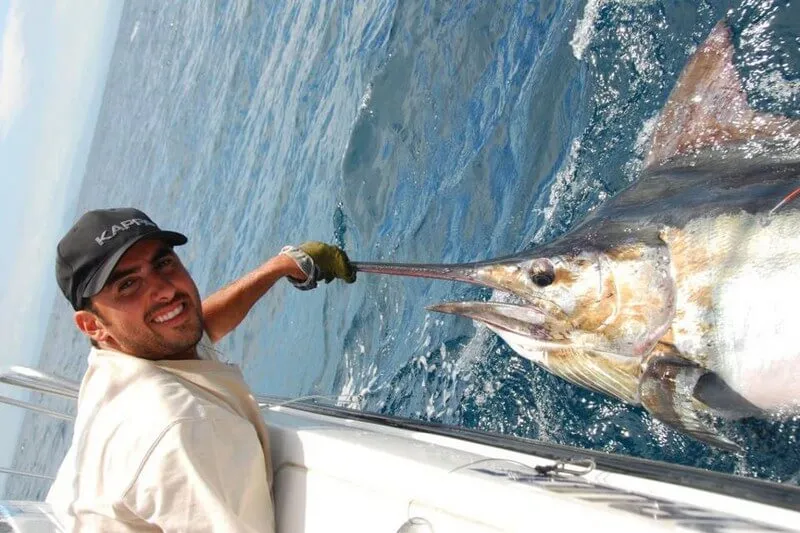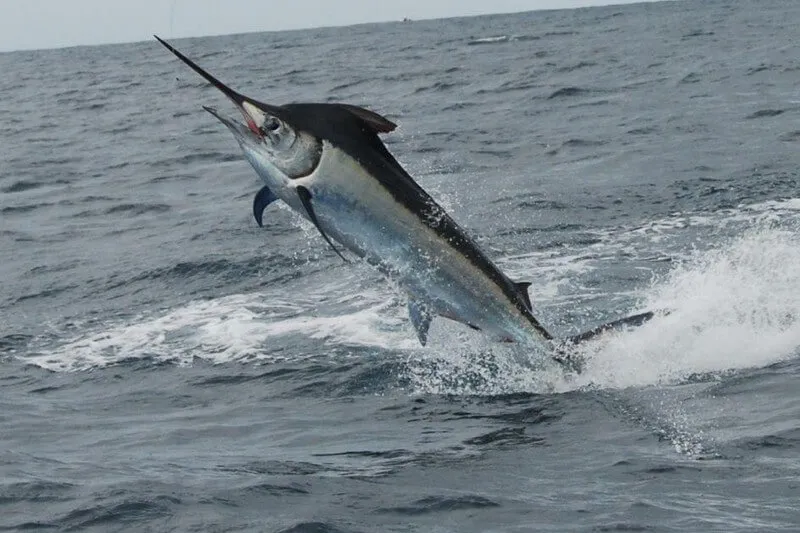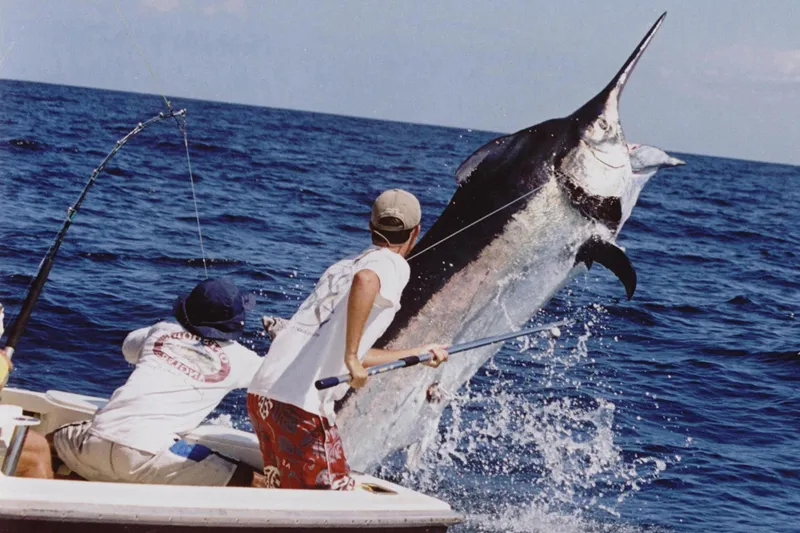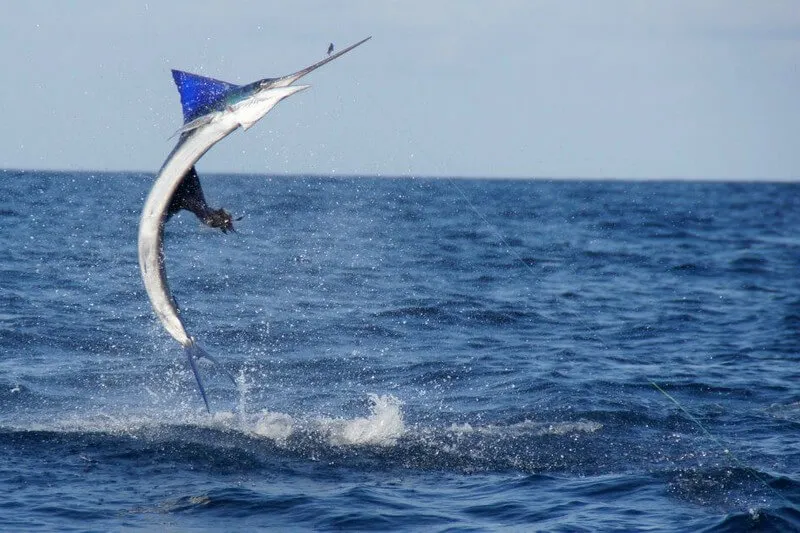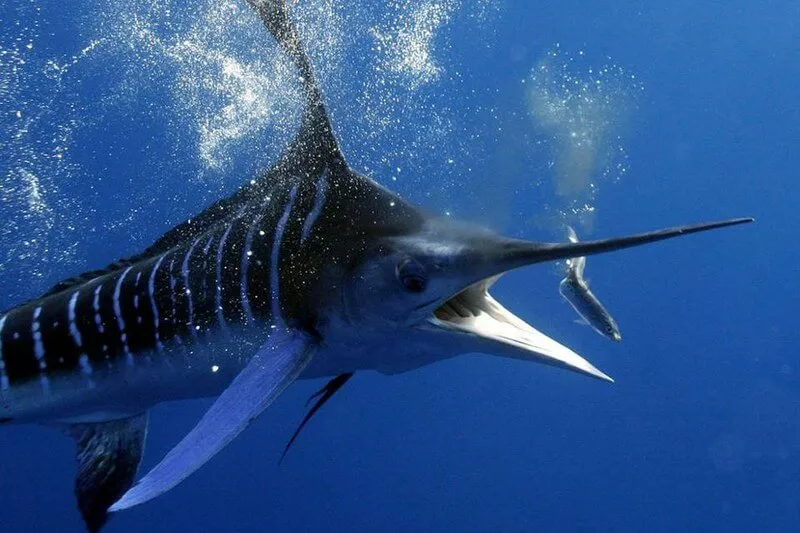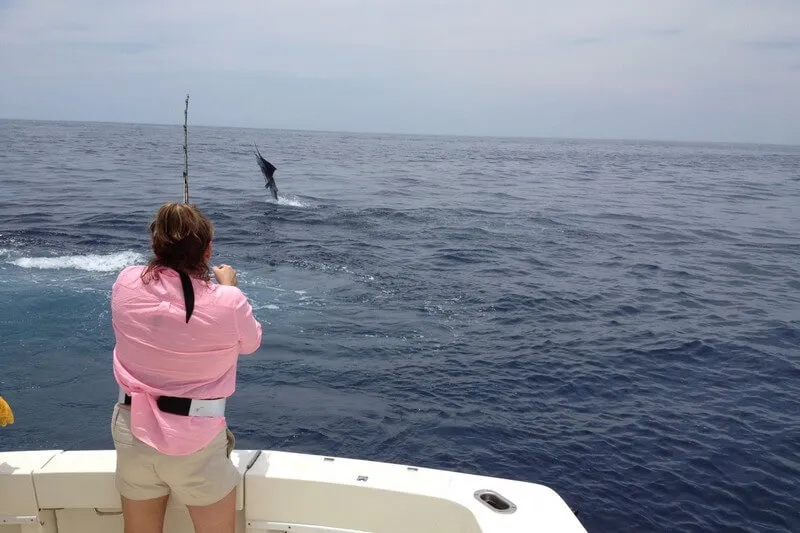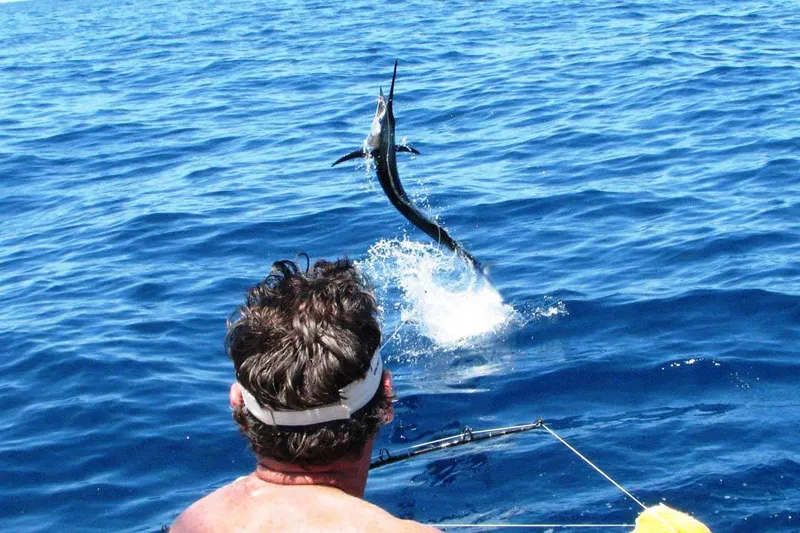Either blue or black species can easily approach 600 pounds, and because of the power, size and persistence, each fish is one of the most highly prized by all anglers. Marlin can be found from the southern part of Costa Rica in the Golfito area all the way up to the north Pacific coast at Tamarindo or Flamingo beach.
Top marlin spots in Costa Rica include Quepos and Drake’s Bay in the south and Los Sueños in the Central Pacific.
They are known to feed on squid and pelagic fishes, including blackfin tuna and frigate mackerel. A powerful, aggressive fighter, they run hard and long, sound deep, and leap high into the air in seemingly inexhaustible display of strength. Fishing methods include trolling large whole baits such as bonito, dolphin, mullet, mackerel, bonefish, ballyhoo, flying fish and squid as well as various types of artificial lures and sometimes strip baits.
Black Marlin Fishing in Costa RicaBlack Marlins can be quickly identified since it is the only marlin to have rigid pectoral fins that cannot be folded flat against the body without breaking the joints. Black Marlins are also different because of their very short ventral fins. The body is very lateral and not rounded. The first dorsal fin is also the shortest of any billfish.
The body of a Black Marlin is blue, changing quickly into silver-white below the lateral line. Oftentimes when leaping from the water during feeding, you can see blue vertical lines on the sides of the Black Marlin.
When fishing offshore in Costa Rica it is very common to catch a 200-500lb black marlin. The largest Black Marlins are generally always female. The Black Marlin is at the top of the food chain and feeds on anything that swims, including smaller marlin.
Black Marlins are found in water over 500ft deep, along cliffs or drop offs hunting. They are arguably one of the most impressively powerful gamefish when hooked with inexhaustible energy as they dive and pull to remove the hook.
While offshore fishing in Costa Rica, Black Marlins are generally caught trolling a spread of teasers and dead bait on circle hooks. It is very common to have several sailfish hook the line simultaneously. They can also be caught with live bait around reefs or floating debris in the water.
Striped Marlin Fishing in Costa RicaStriped Marlin are the smallest marlin, the most distinguishing characteristic is the high, pointed dorsal fin. Striped Marlins are flat and movable, their fins can be folded flush against their body. The lateral line is straight, single and visible. The Striped Marlin has a number of bright blue spots on the fin and pale blue or purple vertical stripes on the sides.
Just because they are the smallest Marlin does not mean they lack a show when hooked. Since they are smaller and lighter, they tend to spend more time out of the water when hooked. They run along the surface fighting to loosen the hook.
Marlin are a lot like sailfish and travel and hunt in packs. This also makes it extremely common to hook 1 or 2 striped marlins at the same time. Fishing methods are tolling with whole fish, strip baits, lures and also live bait fishing. Most Striped Marlin caught in Costa Rica are between 80-200 lbs. Anglers commonly confuse the striped marlin with a blue marlin.
Can I keep my catch? No. Marlins are protected, catch and release only.
Marlin Fishing Jaco
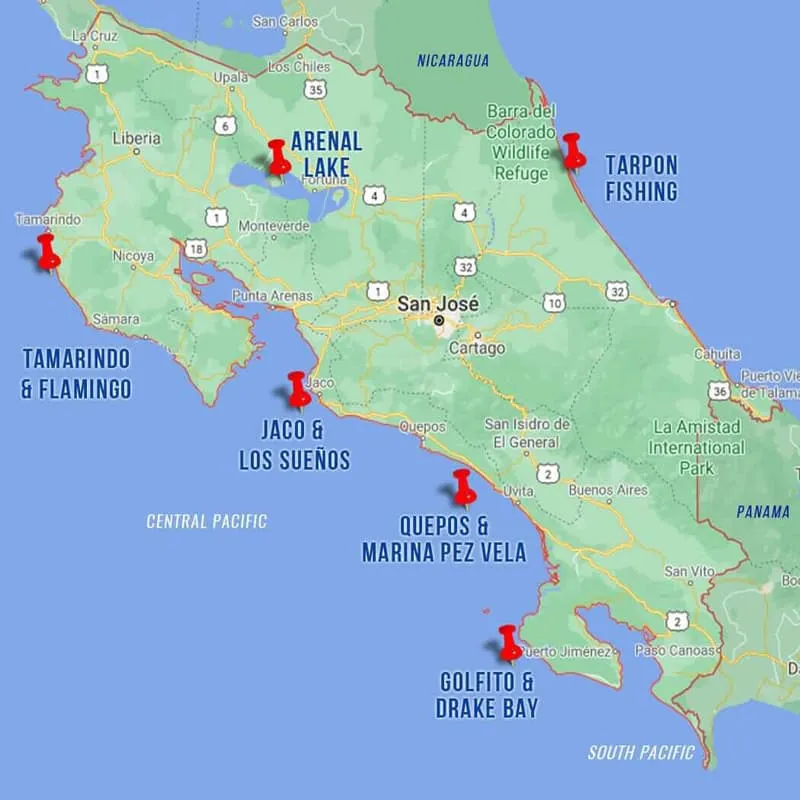
My husband and I went fishing all day yesterday. We had an absolute BLAST! We caught lots a fish. The captain was so nice with a great personality. The mate waited on us the entire time...

